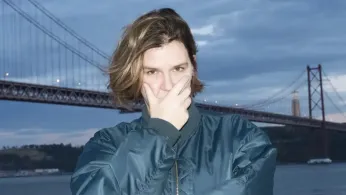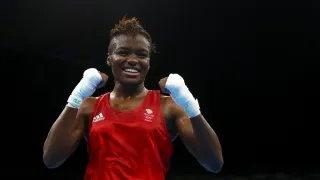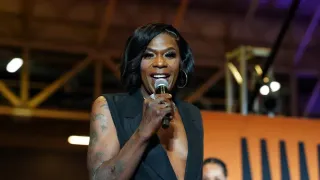
11 hours ago
Glitter, Gender, and Groove: How DJ Violet Mode Is Rewiring Queer Nightlife in 2025
READ TIME: 3 MIN.
In a year marked by both political uncertainty and creative explosion, queer nightlife is once again at the vanguard of cultural change. Across Europe and beyond, a new generation of DJs, artists, and performers is leveraging the club as a site of resistance, affirmation, and sheer, glittering joy. Nowhere is this more evident than in Lisbon, where DJ Violet Mode—real name Inês Borges Coutinho—has emerged as a central figure in reimagining the intersections of music, fashion, and queer ritual in 2025 .
In July 2025, Violet Mode’s weekly residency at Musicbox Lisboa has become the heartbeat of the city’s queer scene, drawing dancers from across the continent and beyond . Her sets defy easy categorization: weaving acid house, breakbeat, techno, and ambient textures with samples from queer icons and protest anthems, Violet Mode creates a sonic landscape that is both fiercely political and deeply personal. “Every night is about rewriting the rules—making space for every kind of body and every story,” she said in a recent interview .
What distinguishes Violet Mode is not just her technical prowess, but her curatorial vision. She is as likely to drop a pulsing underground techno track as she is to blend in spoken word samples from Audre Lorde or snippets of ballroom MCs, making every set a layered dialogue with queer history .
The fashion at Violet Mode’s parties is itself a statement: a riot of gender-play, metallics, and upcycled fabrics, often accented by LED accessories and slogan shirts that harken back to fashion-as-protest . “People come here to experiment, to be seen, to try on a new self for the night,” said Lisbon-based designer Rita Esteves, whose wearable light installations have become a fixture at Violet Mode events . In 2025, queer clubwear is less about following trends and more about remixing them—think chunky platform boots, neon corsets, and slogan tees that shout “Trans Joy” or “Queer Futures Now” .
Far from being just dance parties, Violet Mode’s nights are structured around intentional moments of community care. Each event opens with a collective “grounding” led by local queer activists—sometimes a guided meditation, sometimes a group reading of poetry by Black and trans writers—setting a tone of mutual support . Consent workshops and harm reduction booths staffed by volunteers are a regular feature, reflecting a broader shift in European queer nightlife toward safety and accessibility .
Attendees describe these rituals as essential to the atmosphere. “It’s not just about dancing—it’s about being in a place where you feel protected and celebrated, no matter your gender or body,” said club regular Sofia Almeida .
As with every vibrant scene, new slang and micro-subcultures are emerging. In Lisbon’s queer underground, the term “floorgazers” has caught on to describe those who lose themselves in the music, eyes closed, communing with the bass. Meanwhile, “nightcarvers” refers to partygoers who transform their look multiple times during one night—a playful nod to both gender fluidity and the performativity of club fashion .
There’s also a resurgence of the “chosen family” ritual: at midnight, every Violet Mode party pauses for a “family toast,” where newcomers and regulars alike are invited to introduce themselves and share pronouns—a practice rooted in trans and nonbinary affirmations and now spreading through the wider queer club circuit .
Though rooted in Lisbon, Violet Mode’s influence is spreading. Her recent guest sets at Berlin’s Panorama Bar and London’s Dalston Superstore have been met with acclaim, with critics noting how her approach signals a broader shift toward intersectional, intentionally inclusive nightlife . As she prepares to headline the Queer Futures Festival in Toronto next month, Violet Mode stands as a beacon for a new era—one where music, fashion, and ritual are indivisible from the ongoing project of queer liberation.
“In every city, the details change—but the drive is the same: to make a space where everyone is possible,” Violet Mode reflected after her most recent set .
As queer nightlife evolves, artists like Violet Mode are showing that the dancefloor is not just a refuge, but a laboratory for the future. Through music, fashion, and ritual, communities are building worlds where identity is affirmed, difference is celebrated, and every beat is a step toward collective joy.






